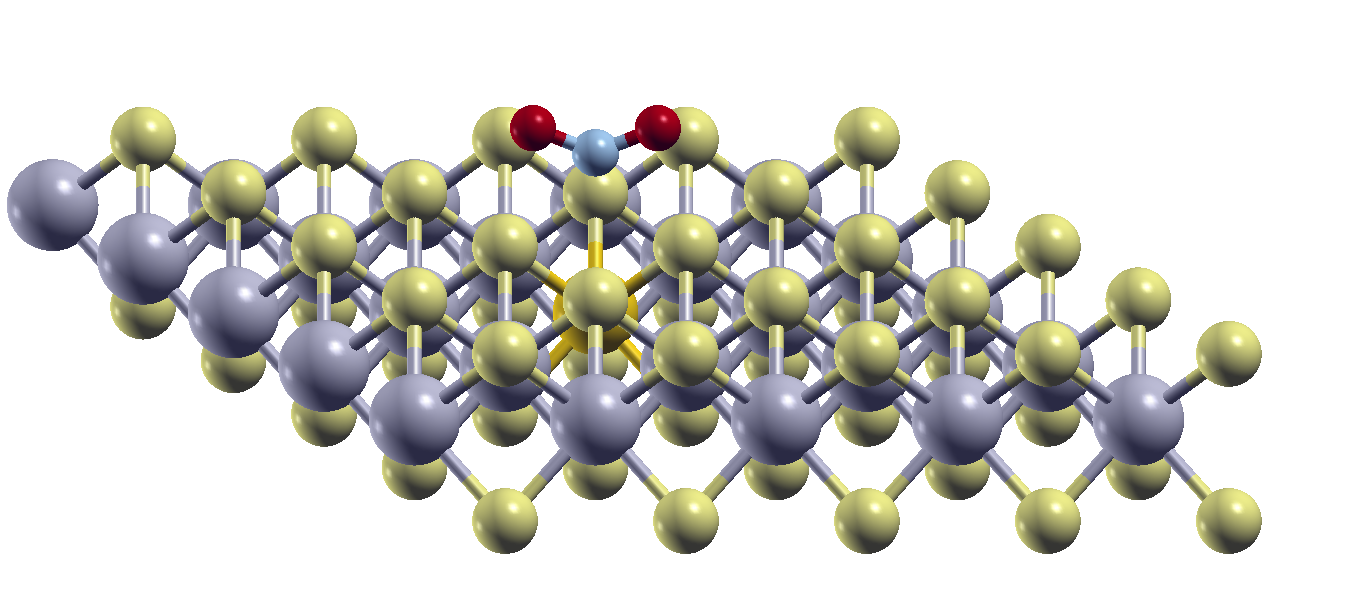 |
|
||||
BiographyMate Ćapin was born in Kiel, Germany, and received both his Bachelor and Master’s degrees in physics at Christian-Albrechts-University in Kiel, Germany, in the Computational Solid State Theory group of Fabio Caruso. Mate joined the Institute for Microelectronics in March of 2023, where he is pursuing a PhD degree with a focus on understanding the electrical properties of two-dimensional materials (e.g., MoS2) and their application in digital field effect transistors (FETs) and sensors. |
|||||
Exploring the Gas Interaction Properties of MoS2 and Its Doped Derivatives
Gas sensing with two-dimensional (2D) materials has garnered significant interest in recent decades, coinciding with intensified research into their fabrication and properties following the first successful exfoliation of graphene. The properties that have propelled 2D gas sensing devices into prominence include their high sensitivity, stemming from their high surface-to-volume ratio, and their low power consumption, attributed to intrinsic electronic effects. The most notable characteristic of 2D materials is the tunability of the bandgap, which consequently imparts tunability to the gas-sensing properties of the device. Transition Metal Dichalcogenides (TMDs) have particularly stood out as a focal point in recent years. This family of versatile and stable layered materials has spurred numerous innovations in the field, although their full potential has not yet been reached. The unique electronic and chemical properties of TMDs make them promising candidates for gas sensing applications, with ongoing research aimed at fully exploiting their capabilities. Our work commenced with exploring 2-dimensional structures, using CP2K to analyze the characteristics of black phosphorus. However, within the project's objectives, black phosphorus was found to be unsuitable for the intended applications. Consequently, the focus shifted towards investigating MoS2. The computational tools used were expanded to include Quantum Espresso and QuantumATK. These first-principle simulation tools provide information on the band structure, the density of states, and the electronic density, along with other properties that help understand the electronic properties of the structures, giving insight into the suitability of this material for gas sensing. Density Functional Theory (DFT) and molecular dynamics (MD) simulations are employed to gain a deeper understanding of the structural and electronic properties of MoS2 and its interaction with gas molecules. Moreover, the research delves into the examination of vacancies and the implantation of various atoms within these 2D structures via substitutional doping. Using first principles and DFT, the aim is to understand the influence of such structural modifications on sensor performance. Introducing defects and dopants can significantly alter the electronic structure and chemical reactivity of TMDs, potentially enhancing their gas-sensing capabilities. Additional calculations of the absorption energies and conductivities when introducing gas above the structures provide valuable insight into the potential behavior of a possible device with the gas it is designed to detect, aiding in optimizing sensor design and performance.

Fig. 1: MoS2 with one NO2 suspended, structure relaxed.


